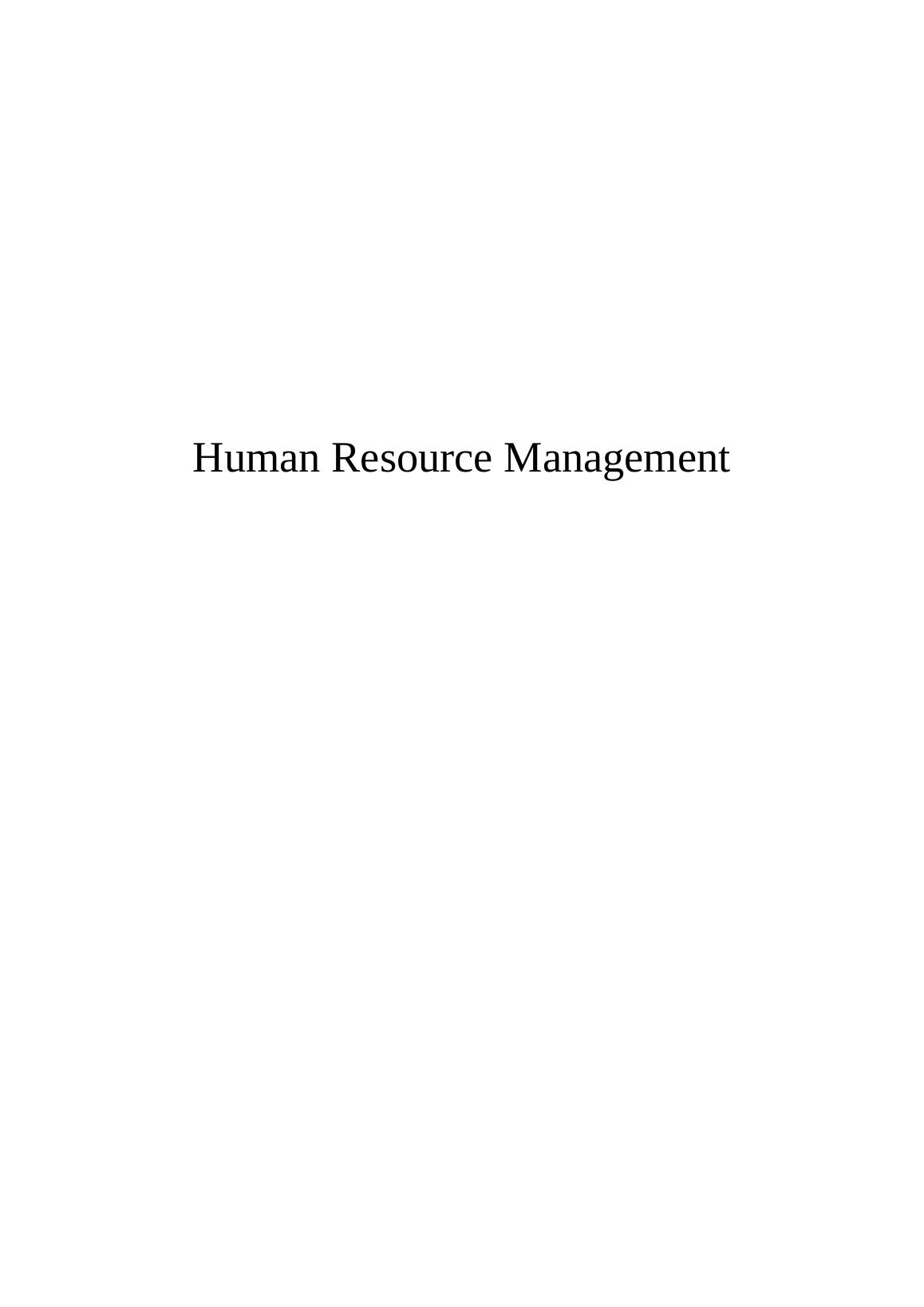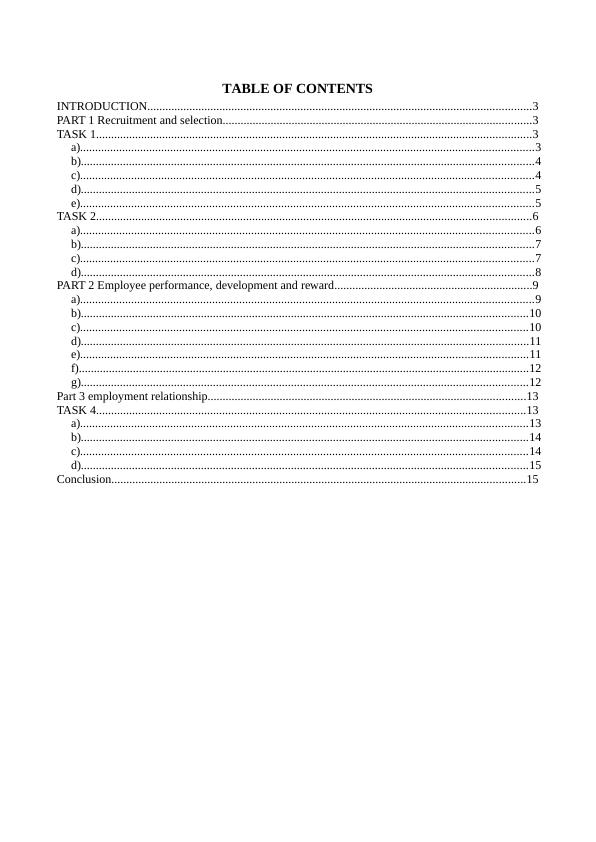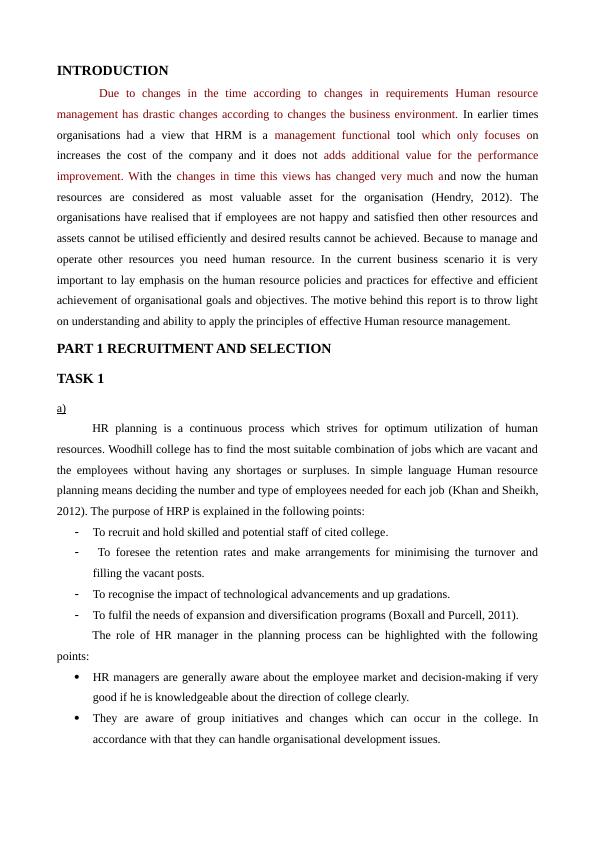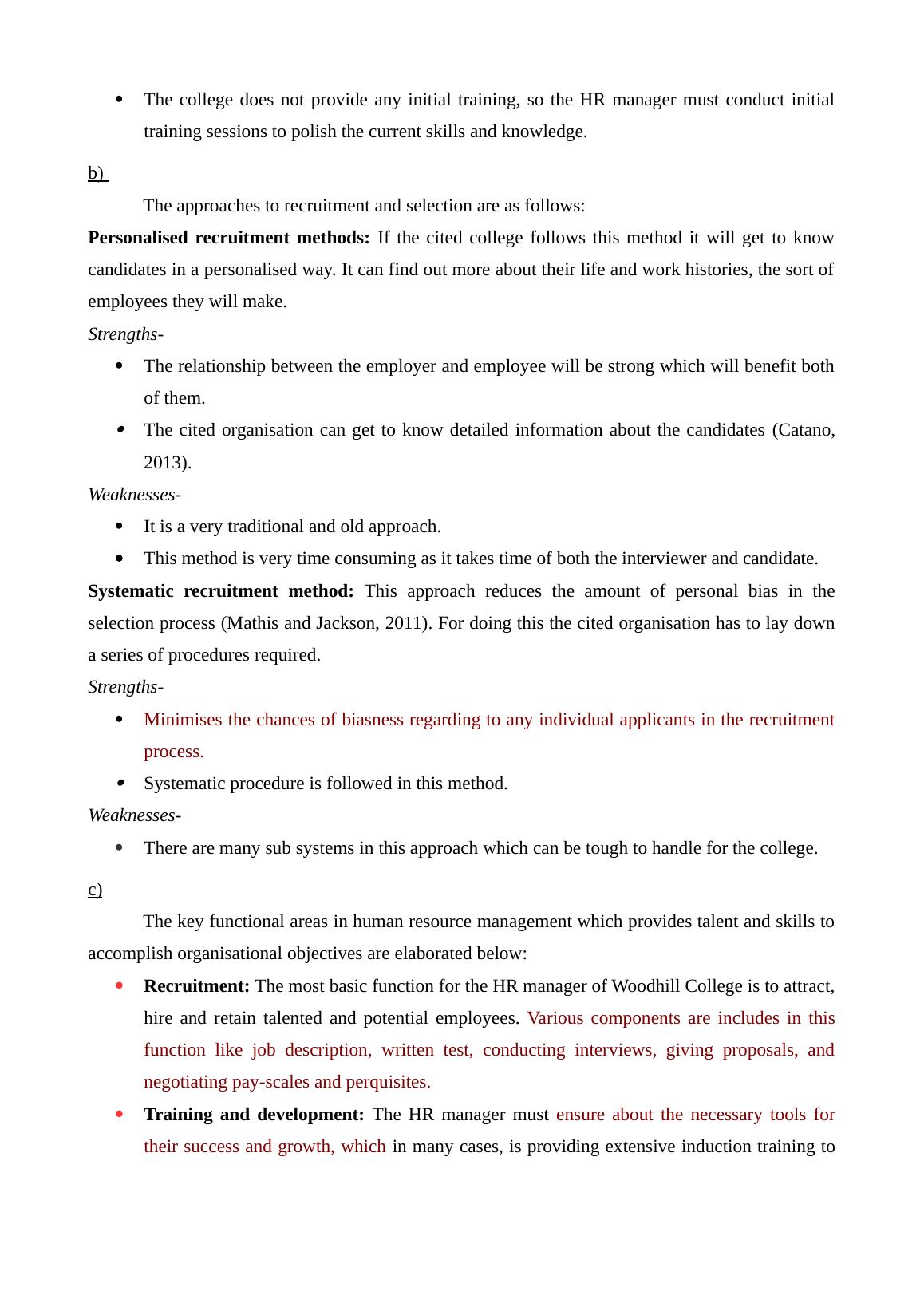TABLE OF CONTENTS INTRODUCTION 3 PART 1 Recruitment and selection
18 Pages5550 Words198 Views
Added on 2020-01-28
About This Document
Human Resource Management TABLE OF CONTENTS INTRODUCTION 3 PART 1 Recruitment and selection 3 TASK 1 3 a) 3 b) 4 c) 4 d) 5 e) 5 TASK 2 6 a) 6 b) 7 c) 7 d) 8 PART 2 Employee performance, development and reward 9 a) 9 b) 10 c) 10 d) 11 e) 11 f) 12 g) 12 Part 3 employment relationship 13 TASK 4 13 a) 13 b) 14 c)
TABLE OF CONTENTS INTRODUCTION 3 PART 1 Recruitment and selection
Added on 2020-01-28
ShareRelated Documents
Human Resource Management

TABLE OF CONTENTSINTRODUCTION................................................................................................................................3PART 1 Recruitment and selection.......................................................................................................3TASK 1.................................................................................................................................................3a).......................................................................................................................................................3b).......................................................................................................................................................4c).......................................................................................................................................................4d).......................................................................................................................................................5e).......................................................................................................................................................5TASK 2.................................................................................................................................................6a).......................................................................................................................................................6b).......................................................................................................................................................7c).......................................................................................................................................................7d).......................................................................................................................................................8PART 2 Employee performance, development and reward..................................................................9a).......................................................................................................................................................9b).....................................................................................................................................................10c).....................................................................................................................................................10d).....................................................................................................................................................11e).....................................................................................................................................................11f)......................................................................................................................................................12g).....................................................................................................................................................12Part 3 employment relationship..........................................................................................................13TASK 4...............................................................................................................................................13a).....................................................................................................................................................13b).....................................................................................................................................................14c).....................................................................................................................................................14d).....................................................................................................................................................15Conclusion..........................................................................................................................................15

INTRODUCTION Due to changes in the time according to changes in requirements Human resourcemanagement has drastic changes according to changes the business environment. In earlier timesorganisations had a view that HRM is a management functional tool which only focuses onincreases the cost of the company and it does not adds additional value for the performanceimprovement. With the changes in time this views has changed very much and now the humanresources are considered as most valuable asset for the organisation (Hendry, 2012). Theorganisations have realised that if employees are not happy and satisfied then other resources andassets cannot be utilised efficiently and desired results cannot be achieved. Because to manage andoperate other resources you need human resource. In the current business scenario it is veryimportant to lay emphasis on the human resource policies and practices for effective and efficientachievement of organisational goals and objectives. The motive behind this report is to throw lighton understanding and ability to apply the principles of effective Human resource management.PART 1 RECRUITMENT AND SELECTIONTASK 1a)HR planning is a continuous process which strives for optimum utilization of humanresources. Woodhill college has to find the most suitable combination of jobs which are vacant andthe employees without having any shortages or surpluses. In simple language Human resourceplanning means deciding the number and type of employees needed for each job (Khan and Sheikh,2012). The purpose of HRP is explained in the following points:To recruit and hold skilled and potential staff of cited college. To foresee the retention rates and make arrangements for minimising the turnover andfilling the vacant posts.To recognise the impact of technological advancements and up gradations.To fulfil the needs of expansion and diversification programs (Boxall and Purcell, 2011).The role of HR manager in the planning process can be highlighted with the followingpoints:HR managers are generally aware about the employee market and decision-making if verygood if he is knowledgeable about the direction of college clearly.They are aware of group initiatives and changes which can occur in the college. Inaccordance with that they can handle organisational development issues.

The college does not provide any initial training, so the HR manager must conduct initialtraining sessions to polish the current skills and knowledge.b) The approaches to recruitment and selection are as follows:Personalised recruitment methods: If the cited college follows this method it will get to knowcandidates in a personalised way. It can find out more about their life and work histories, the sort ofemployees they will make.Strengths-The relationship between the employer and employee will be strong which will benefit bothof them.The cited organisation can get to know detailed information about the candidates (Catano,2013).Weaknesses-It is a very traditional and old approach.This method is very time consuming as it takes time of both the interviewer and candidate.Systematic recruitment method: This approach reduces the amount of personal bias in theselection process (Mathis and Jackson, 2011). For doing this the cited organisation has to lay downa series of procedures required.Strengths-Minimises the chances of biasness regarding to any individual applicants in the recruitmentprocess.Systematic procedure is followed in this method.Weaknesses-There are many sub systems in this approach which can be tough to handle for the college.c)The key functional areas in human resource management which provides talent and skills toaccomplish organisational objectives are elaborated below:Recruitment: The most basic function for the HR manager of Woodhill College is to attract,hire and retain talented and potential employees. Various components are includes in thisfunction like job description, written test, conducting interviews, giving proposals, andnegotiating pay-scales and perquisites.Training and development: The HR manager must ensure about the necessary tools fortheir success and growth, which in many cases, is providing extensive induction training to

End of preview
Want to access all the pages? Upload your documents or become a member.
Related Documents
Human Resource Management: Recruitment, Selection, and Traininglg...
|17
|4295
|466
Role of Human Resource Management | Woodhilllg...
|16
|5325
|144
TASK 13 a) Purpose of workforce-planning and role of HR managerlg...
|18
|4612
|281
Human Resources Management: Recruitment and Selection Processlg...
|17
|4182
|161
Report On Woodhill College - Recruitment & Selection Approacheslg...
|16
|5254
|225
Human Resource Management Assessment Approachlg...
|19
|5734
|248
